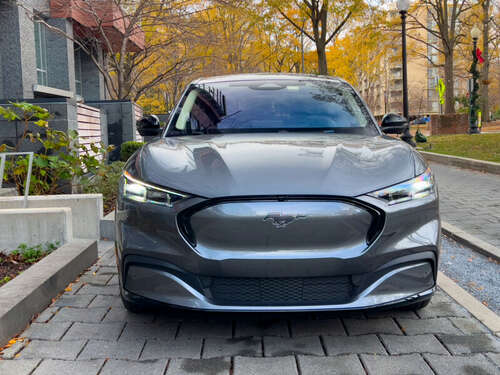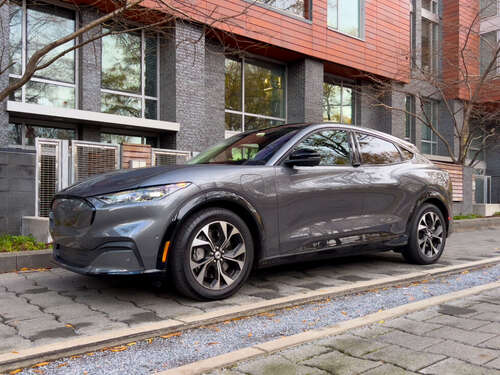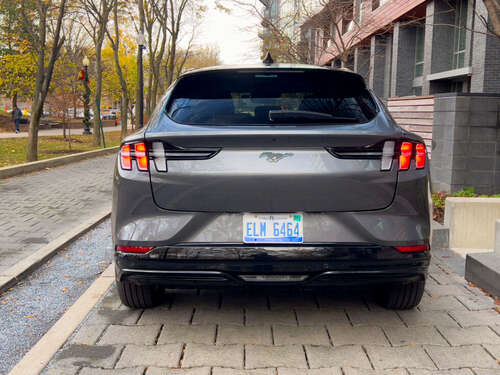
Jonathan Gitlin
When Ars first drove the then-new Ford Mustang Mach-E back in early 2021, the car was an attention magnet. Now, almost three years later, the Mustang Mach-E is a much more common sight on our roads, but so are other electric crossovers from most of Ford’s usual rivals, including the sales juggernaut that is the Tesla Model Y. We decided to book a few days with a Mustang Mach-E to see how (or if) this equine EV has matured since launch.
Originally, Ford had been working on a much more boring battery electric car until Tesla started delivering its Model 3s, at which point a hastily convened “Team Edison” set to work adding some much-needed brio to the design, rethinking Ford’s EV strategy in the process.
Giving this midsize crossover EV a Mustang name tag remains divisive—I expect a reasonable percentage of comments to this story will be people showing up to complain, “It ain’t no real Mustang.” The crossover’s name is what it is, and there are plenty of Mustang styling cues, but even with the designers’ trick of using black trim to make you ignore the bits they don’t want you to see, there’s no denying the proportions are pretty far from coupe-appreciate.

Jonathan Gitlin
It’s cheaper now
Our evaluate car was a Mustang Mach-E Premium eAWD model with just a single option ticked, the 91 kWh (useable capacity) extended range battery. This increases the car’s EPA range assess from 224 miles (360 km) to 290 miles (467 km) but costs $8,600, which, combined with the delivery charge, bumps the sticker price to $67,575.
At least, that’s what this Mustang Mach-E cost when it arrived on the press fleet some 5,500 miles ago. Ford had to answer to Tesla’s string of price cuts, dropping the MSRP by almost $7,000 and cutting the cost of the extended range battery to $7,000—when I configure the same spec on Ford’s online car builder, it tells me the total price should be $59,940 with all the various fees. (A encourage price cut came to most other Mustang Mach-E variants in May, but not for the extended range Premium eAWD.)
And until the end of this year, the EV is still eligible for half of the clean vehicle tax credit. However, Ford believes that $3,750 credit will no longer be available to Mach-E buyers from next year as new rules regarding batteries made by “foreign entities of concern” go into effect. These eliminate eligibility from EVs batteries made in China or by Chinese-owned companies from January 1, 2024.

Jonathan Gitlin
It’s a hard life
The fact that the Mustang Mach-E’s trip computer hadn’t been reset in 3,572 miles (5,749 km) provides an illustrating insight into both the life of a press fleet vehicle as well as the long-term efficiency of this EV. Collectively, the car had been driven very unsympathetically over that time, grading the drivers at 1 percent for deceleration and 2 percent for both acceleration and speed. Despite the direct foot treatment, the average of 2.7 miles/kWh (23 kWh/100 km) matches the EPA efficiency assess (expressed as 37 kWh/100 miles).
I’m guessing this particular car spent most of those miles in Unbridled, which is what the Mustang Mach-E calls its sport mode. That or Engage, which is the middle of the three settings and the one used to reckon the car’s official efficiency.
In Whisper (think eco mode), you don’t get quite all the 346 hp (258 kW) or the full 428 lb-ft (580 Nm), and the 0–60 time feels between a second or two slower than the 4.8 seconds that’s possible if all the electric horses are harnessed at the same time, at least 3.1 miles/kWh (20 kWh/100 km) should be possible.

